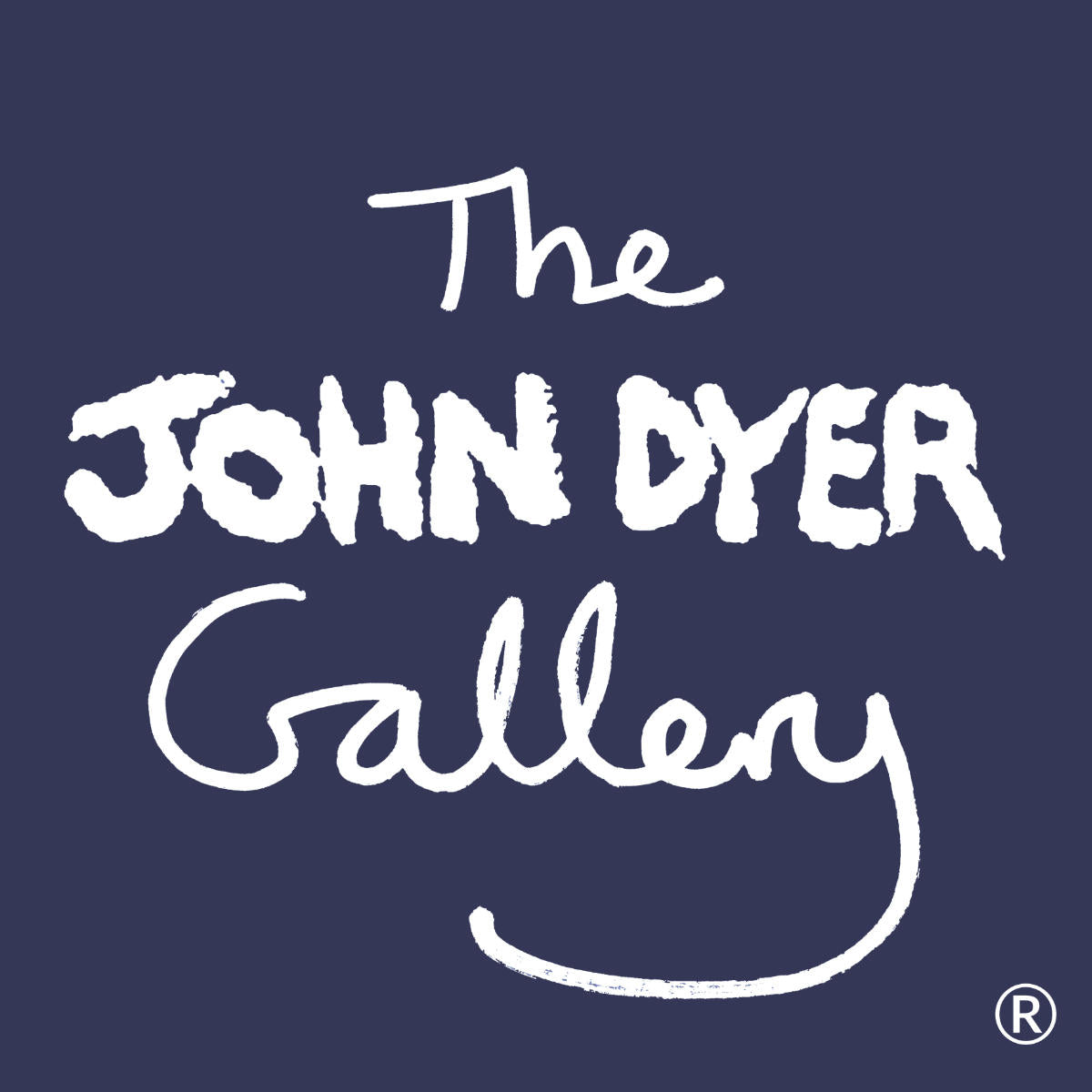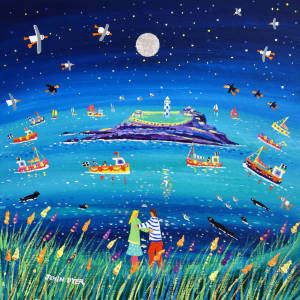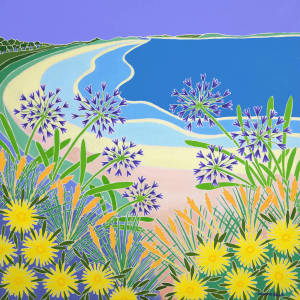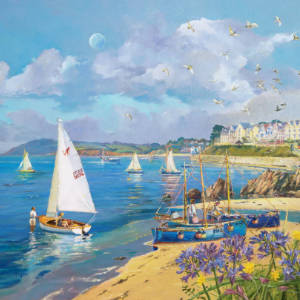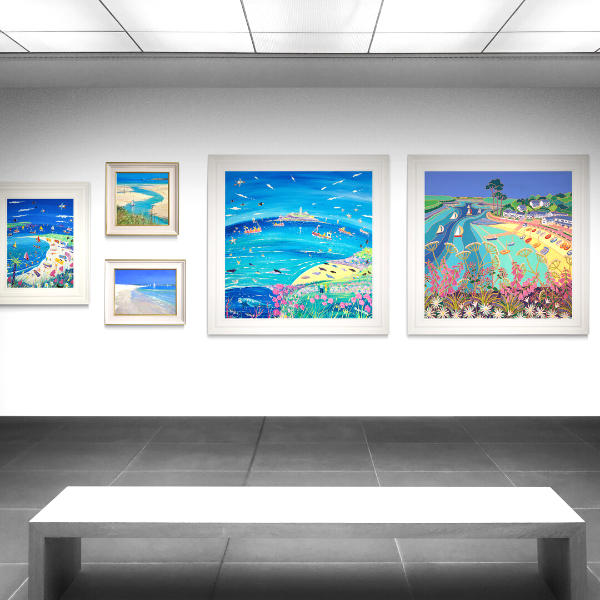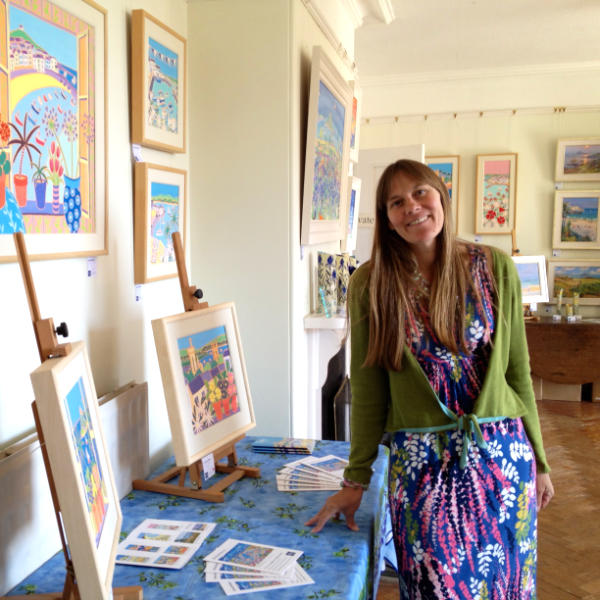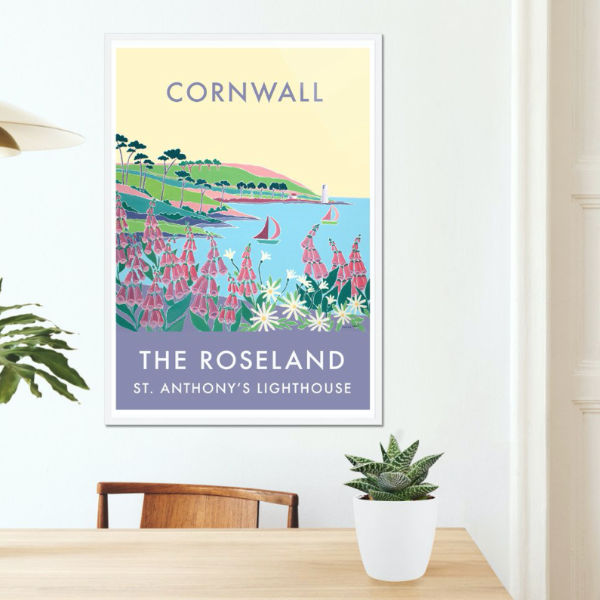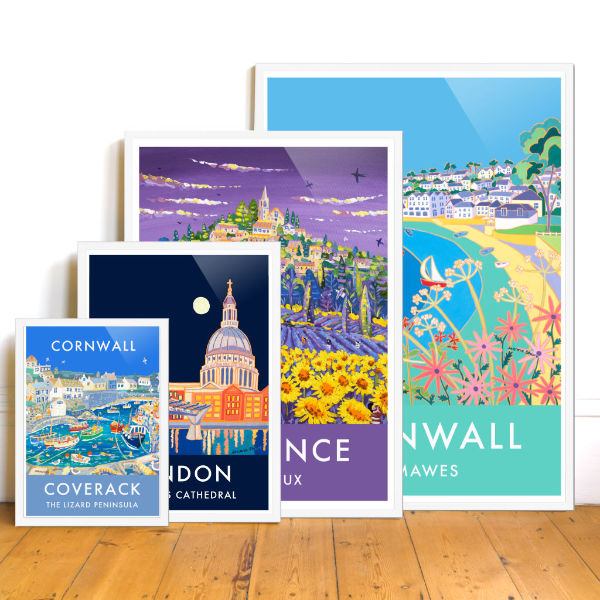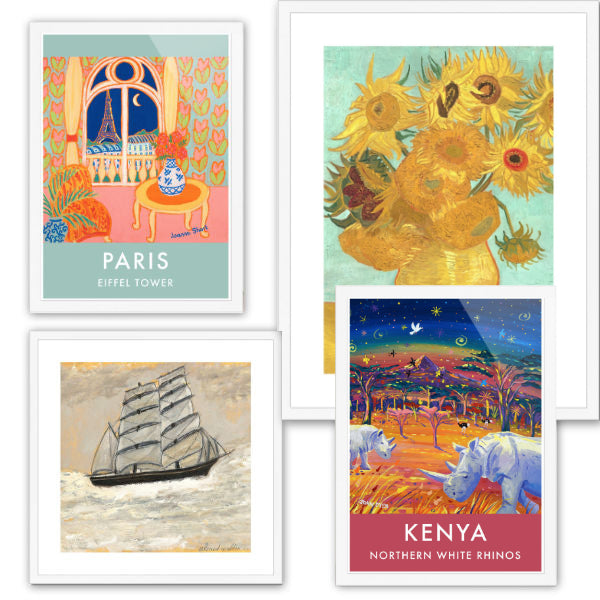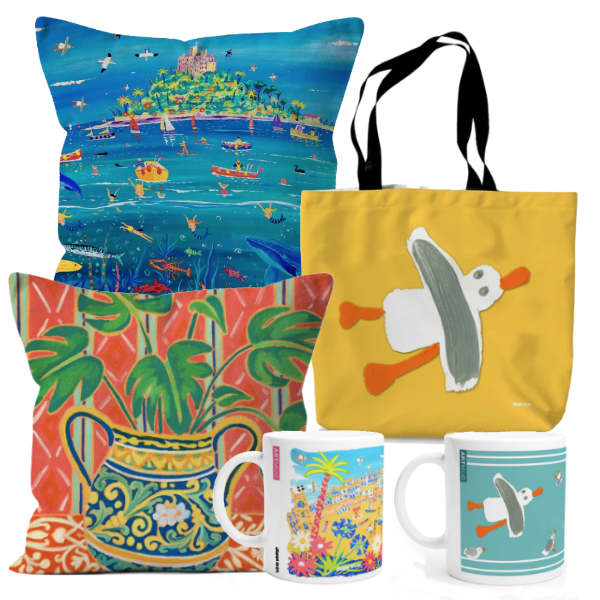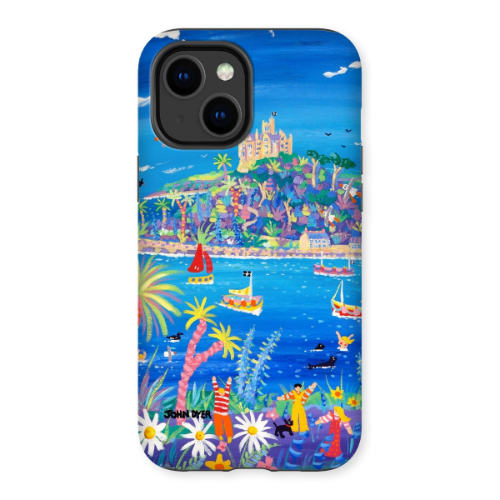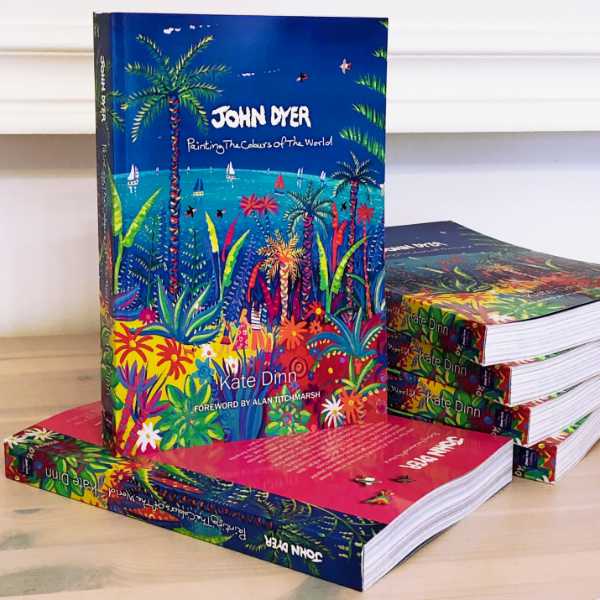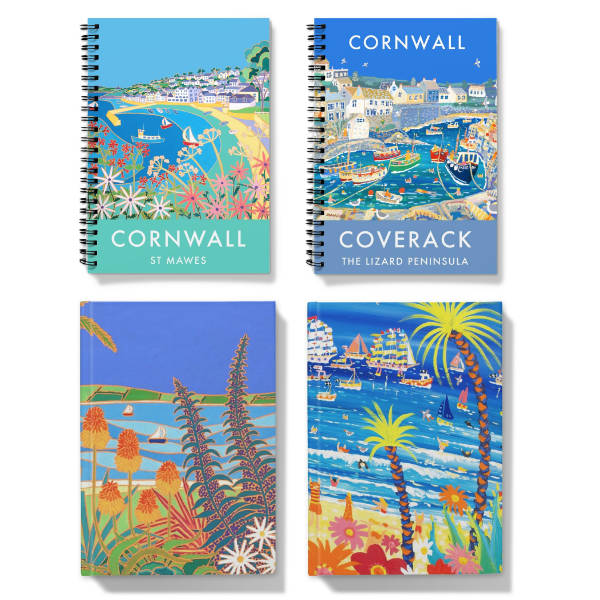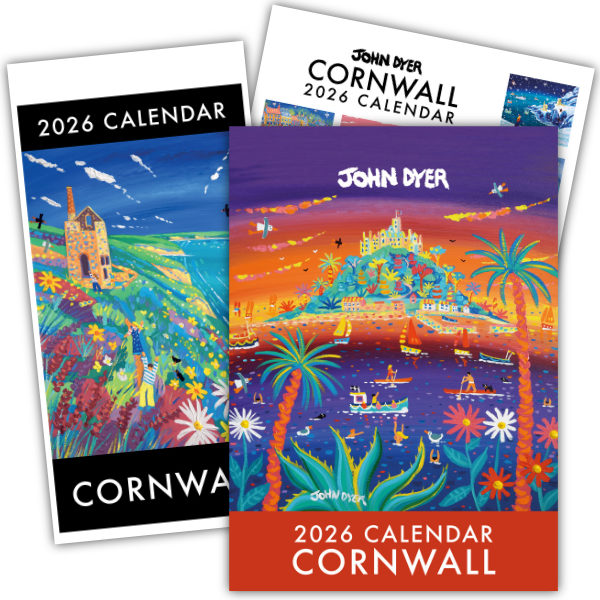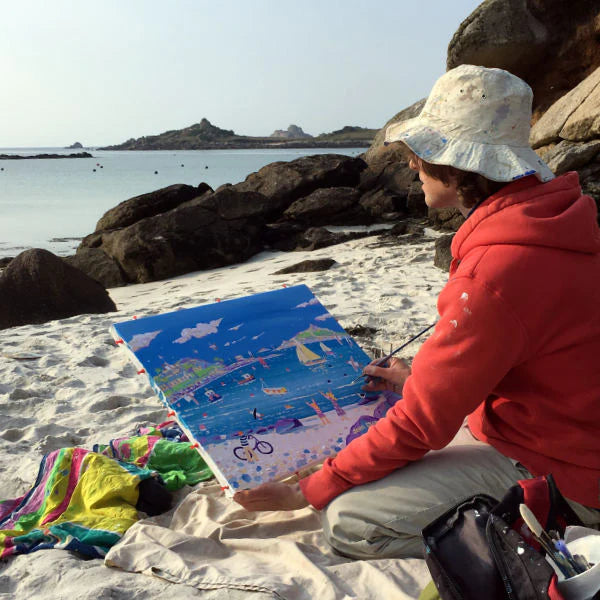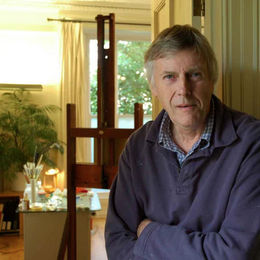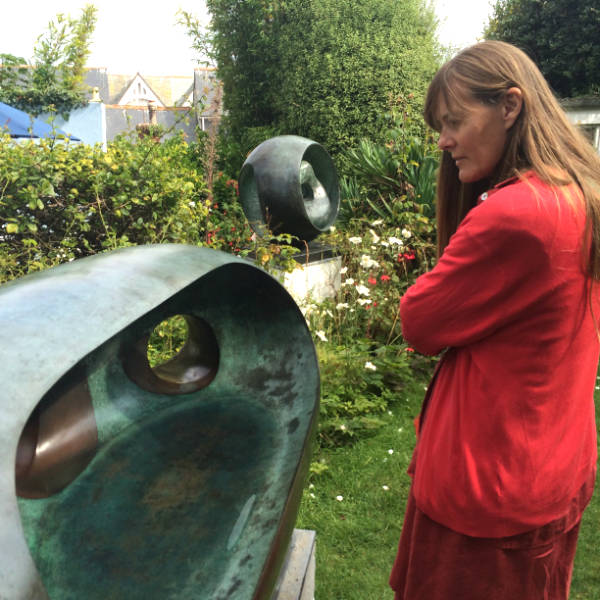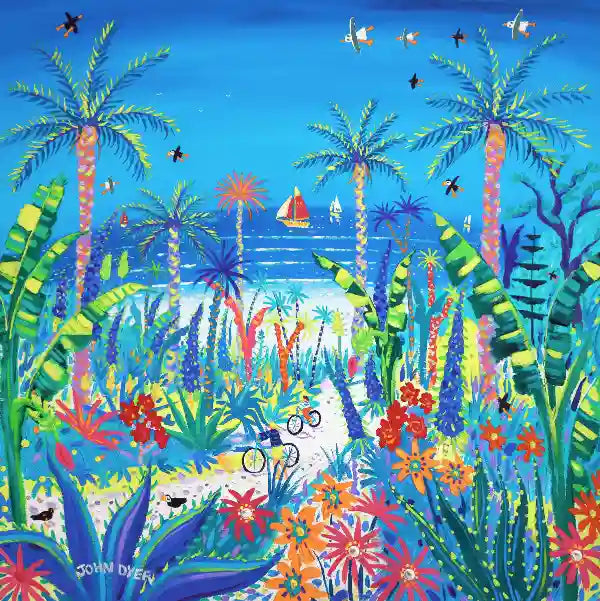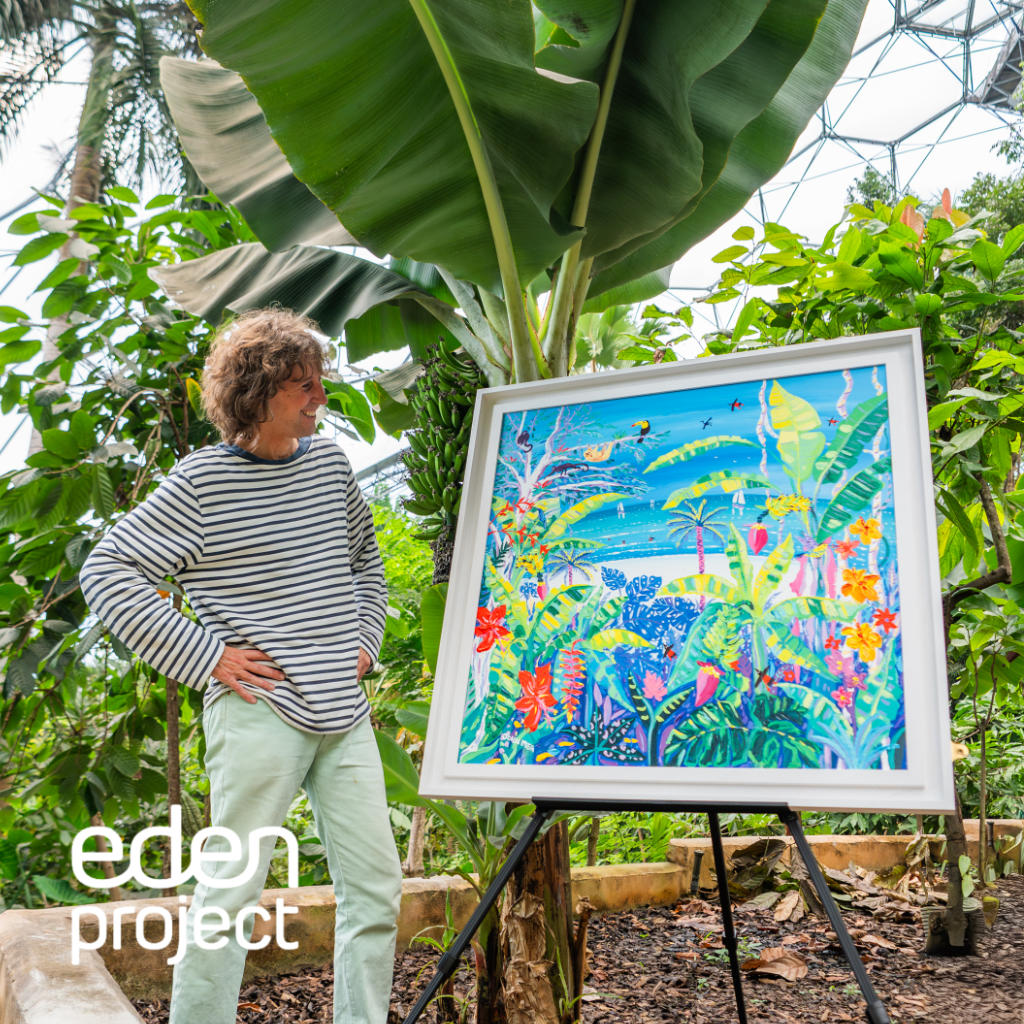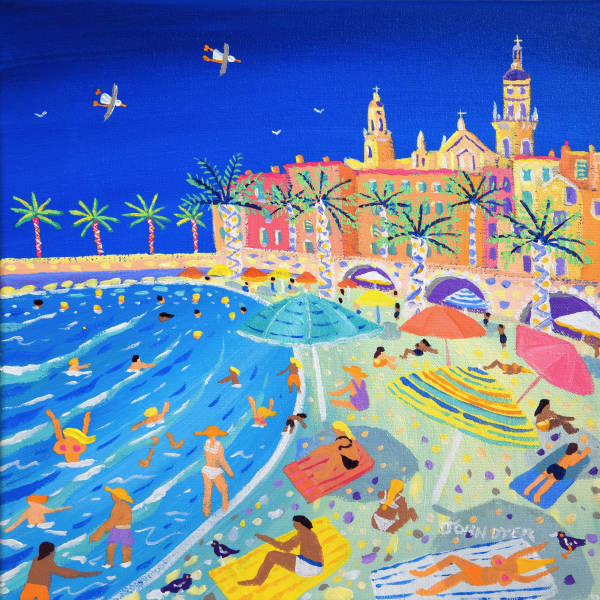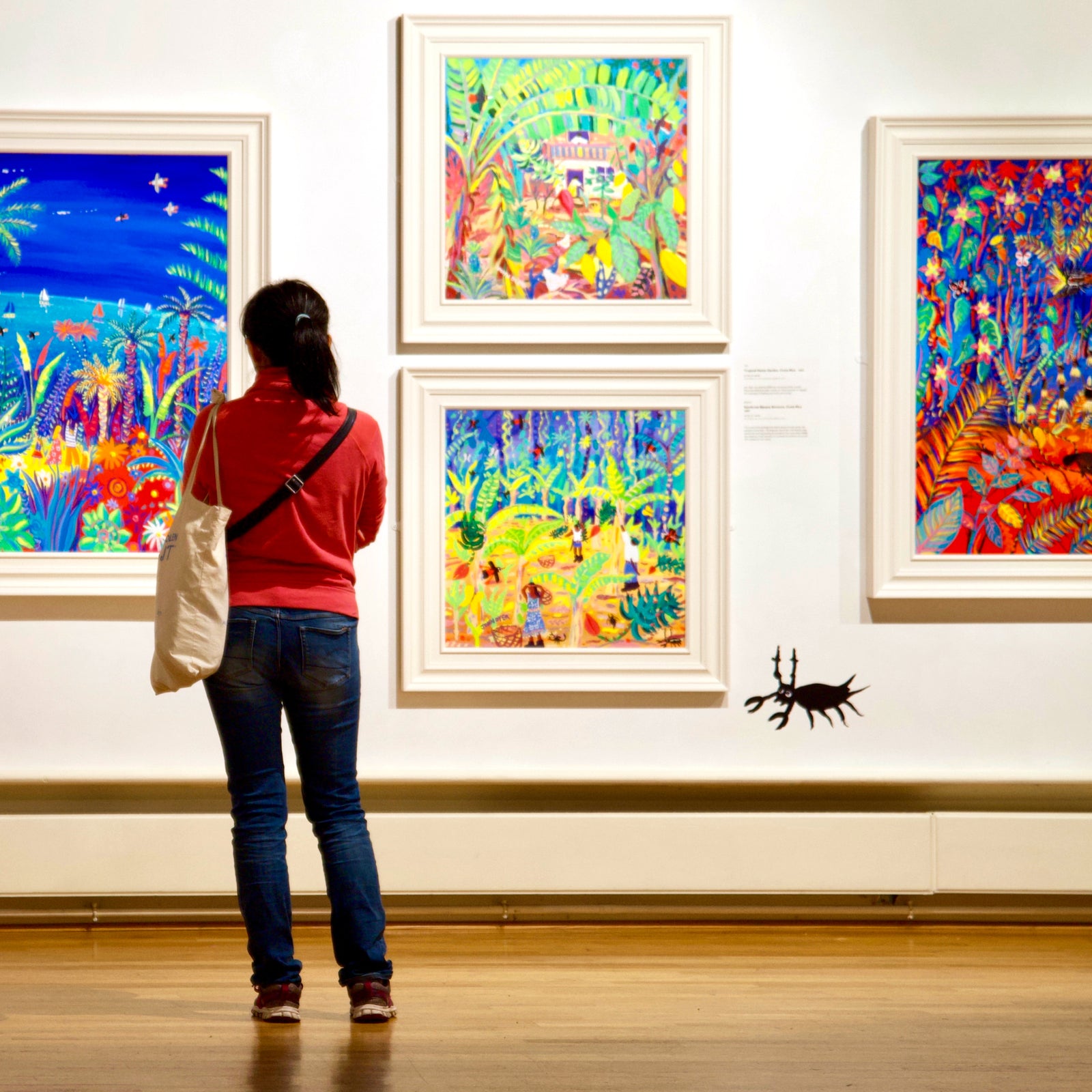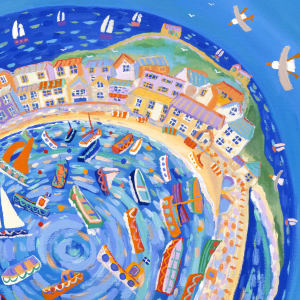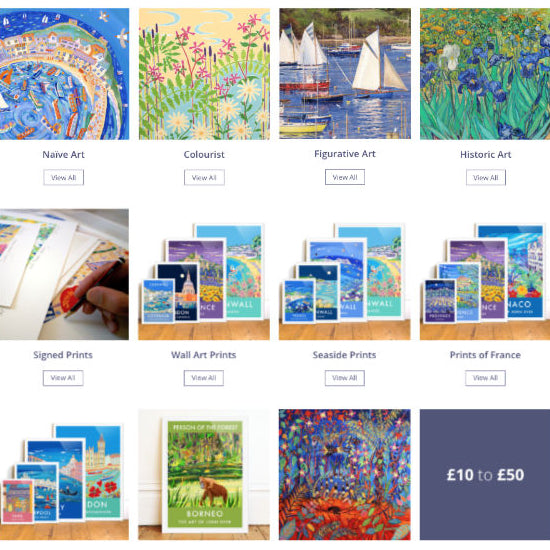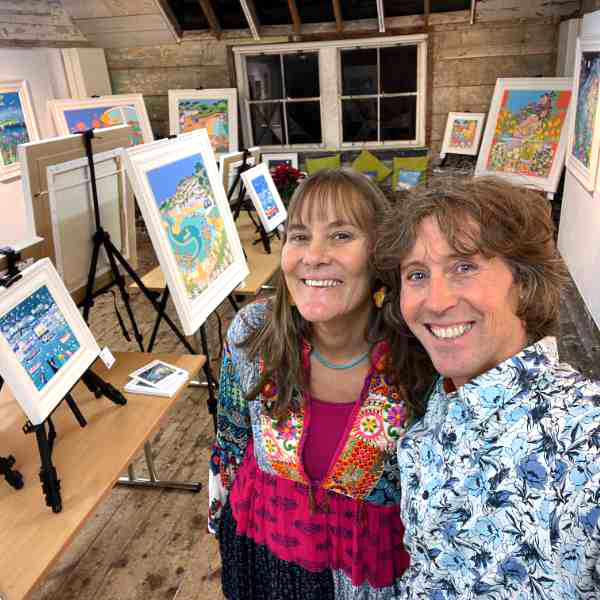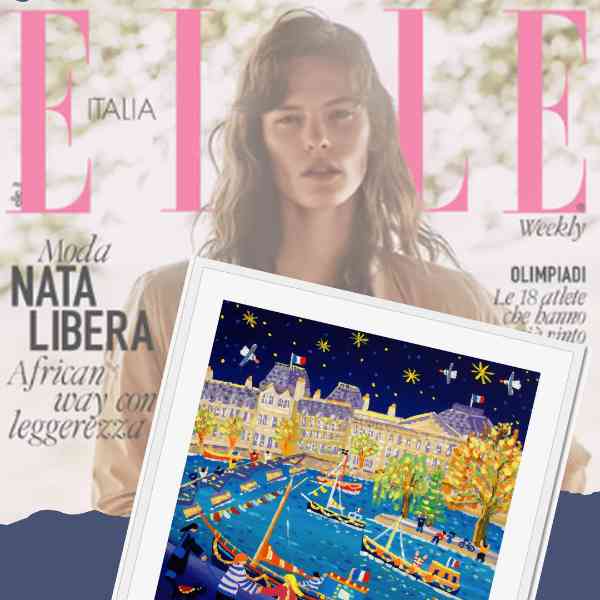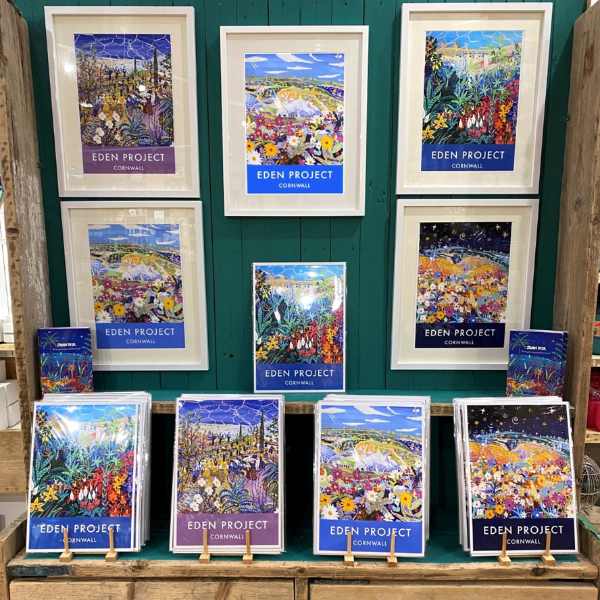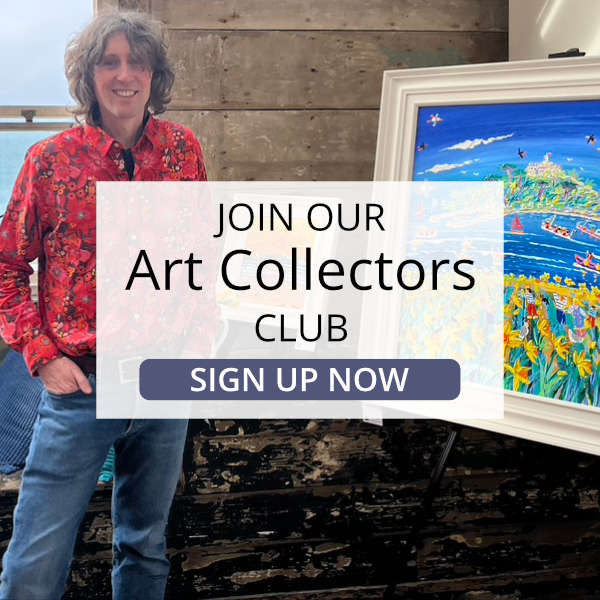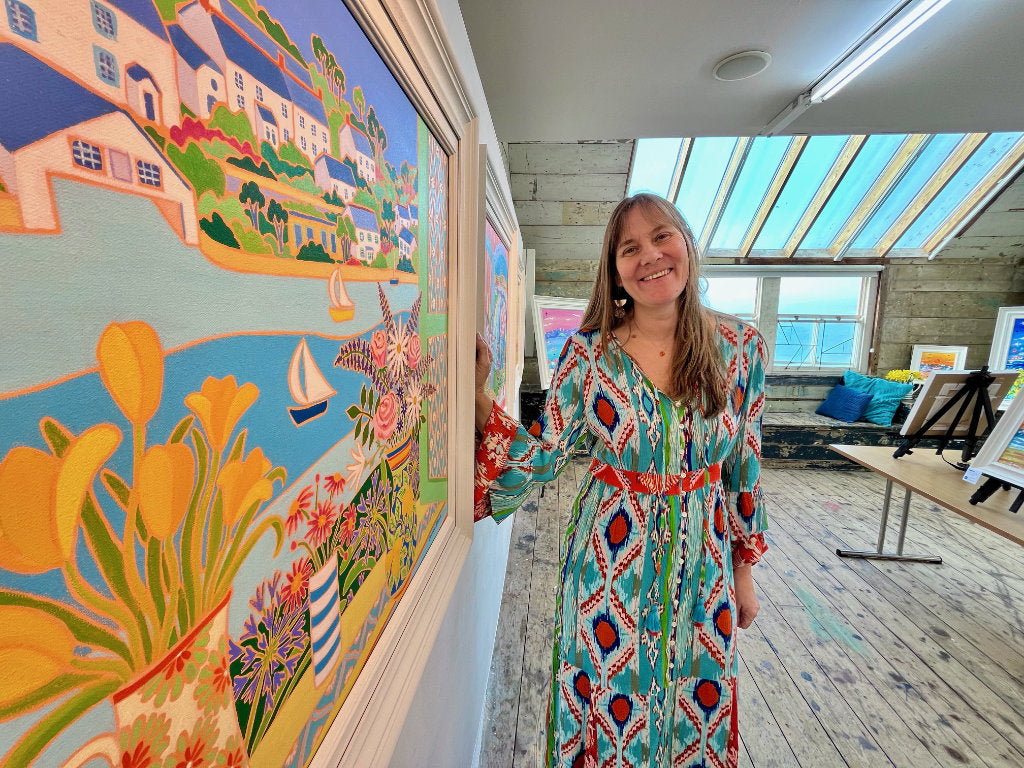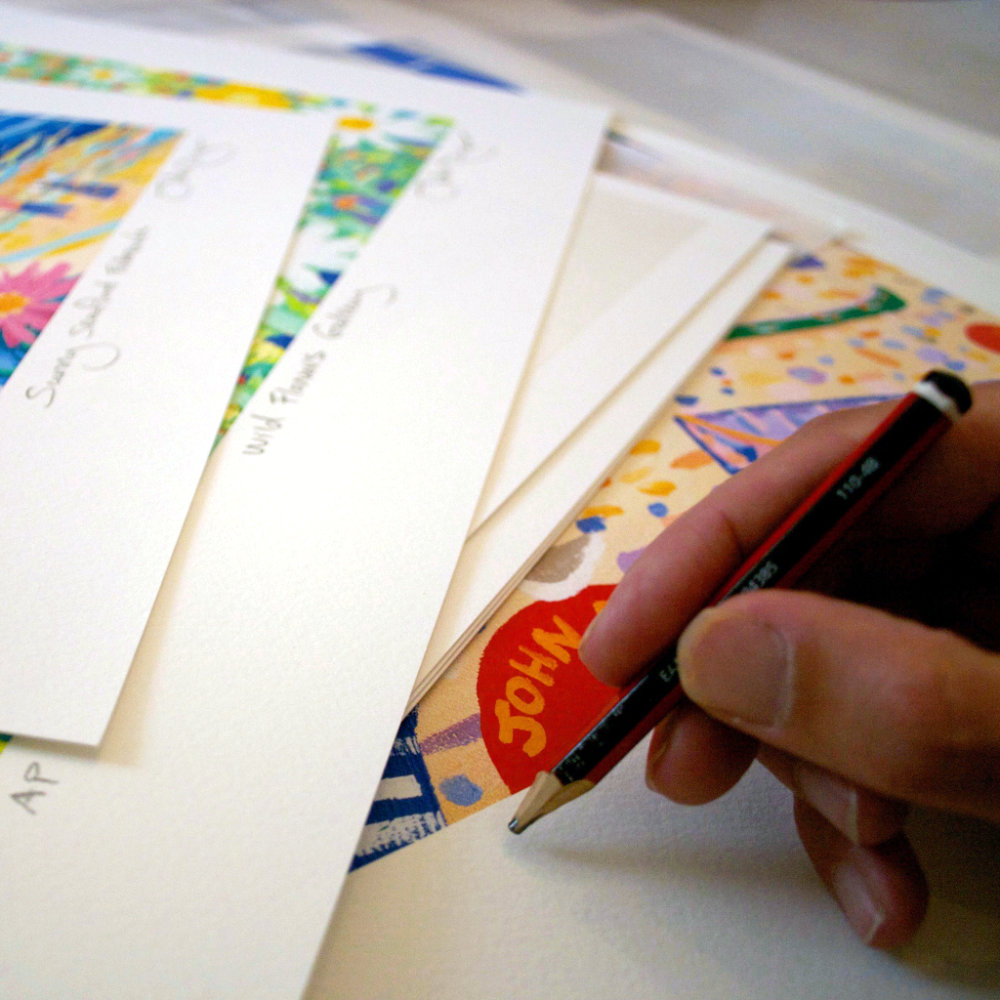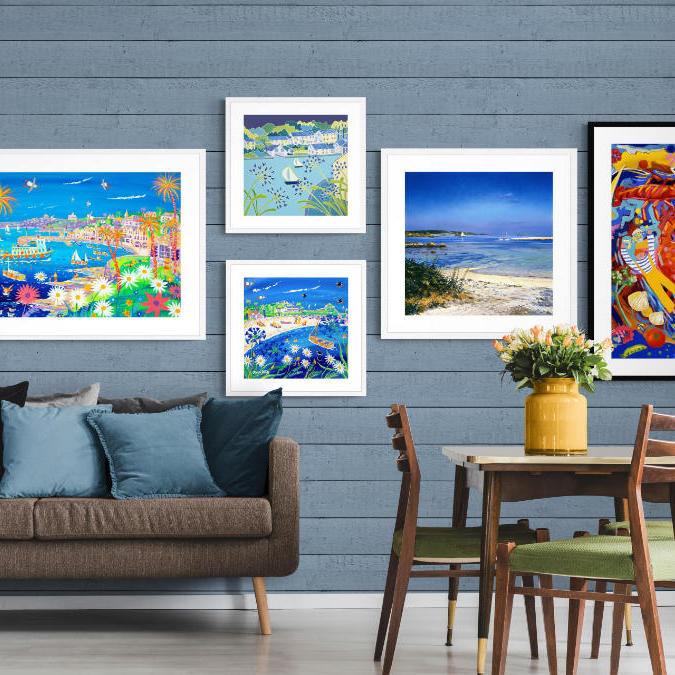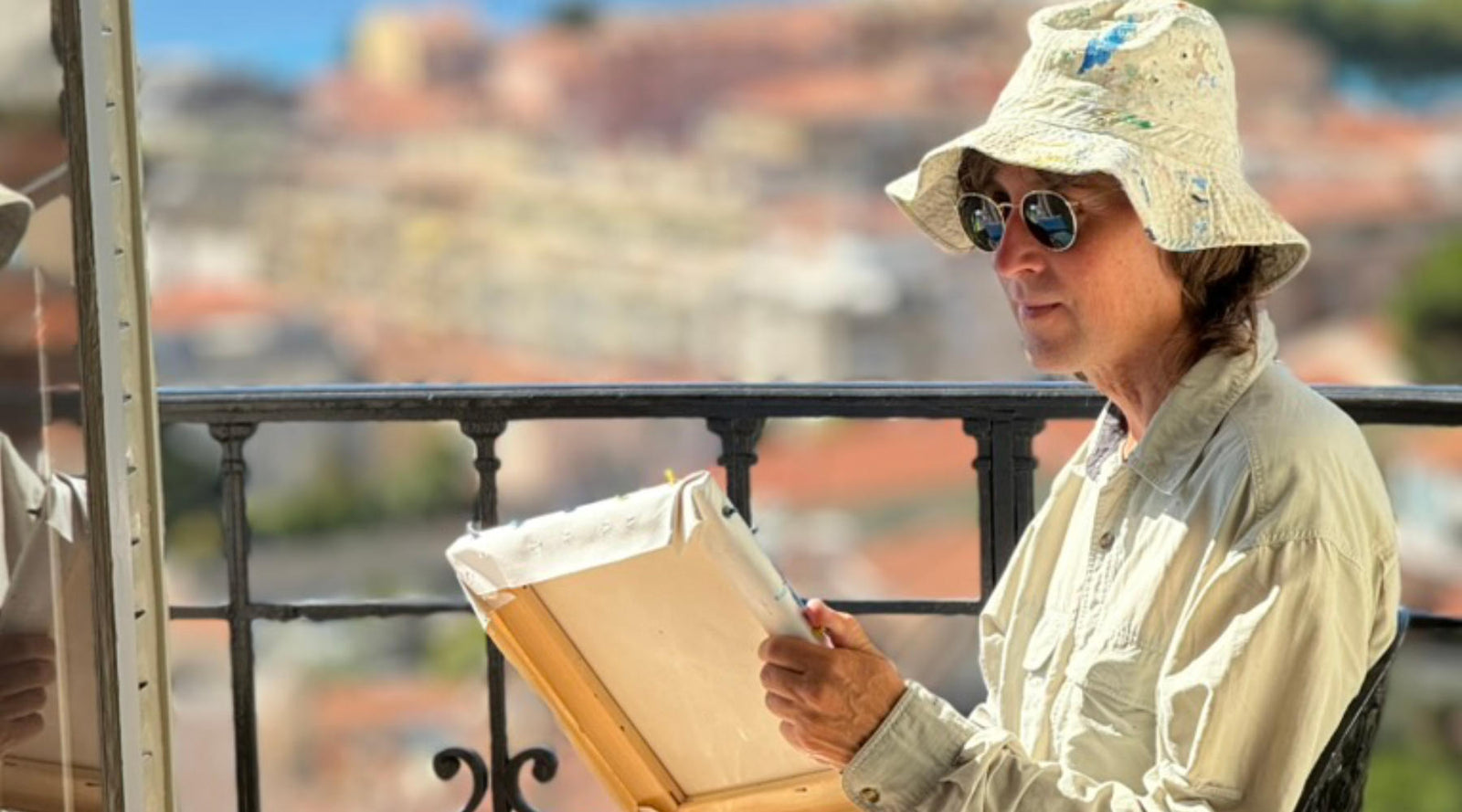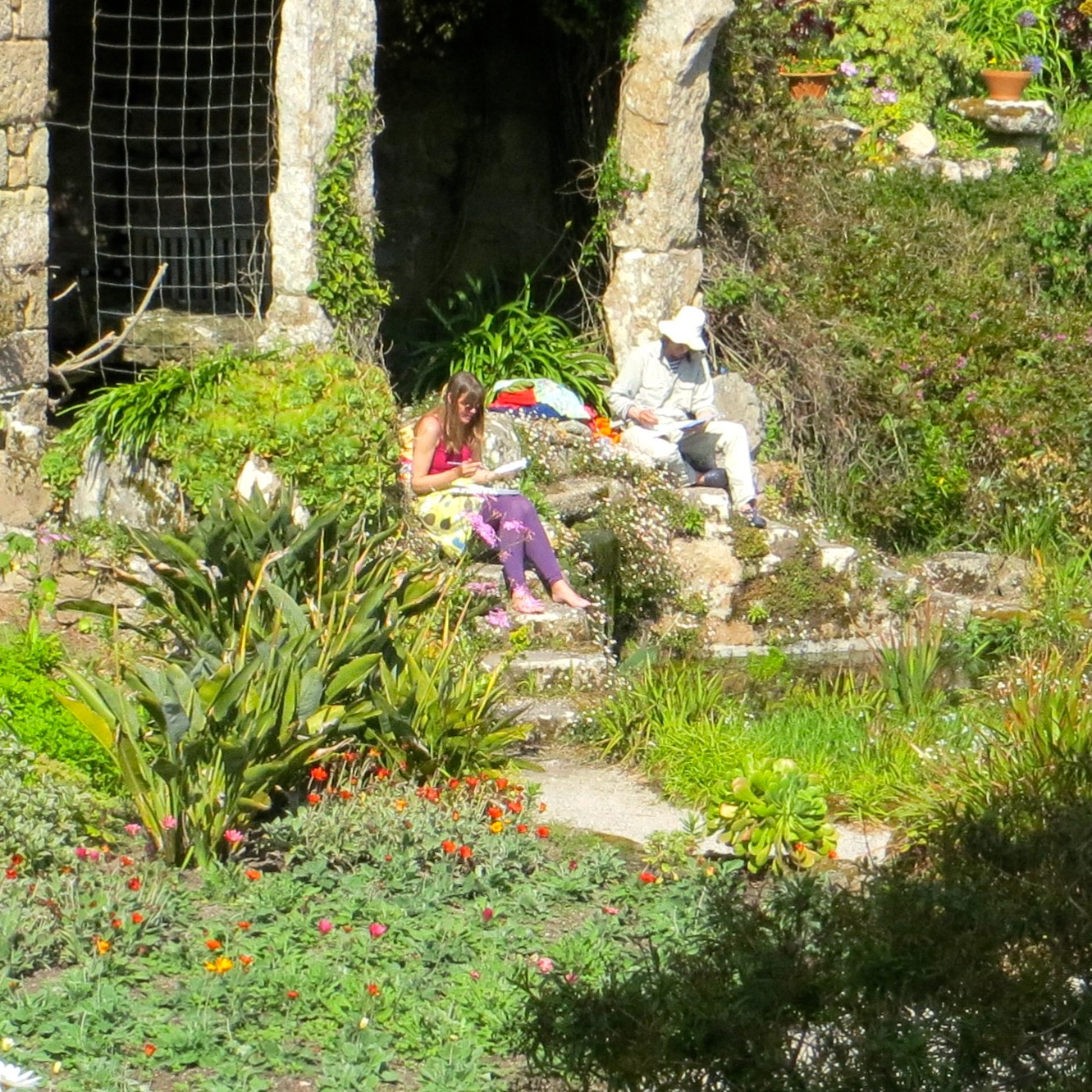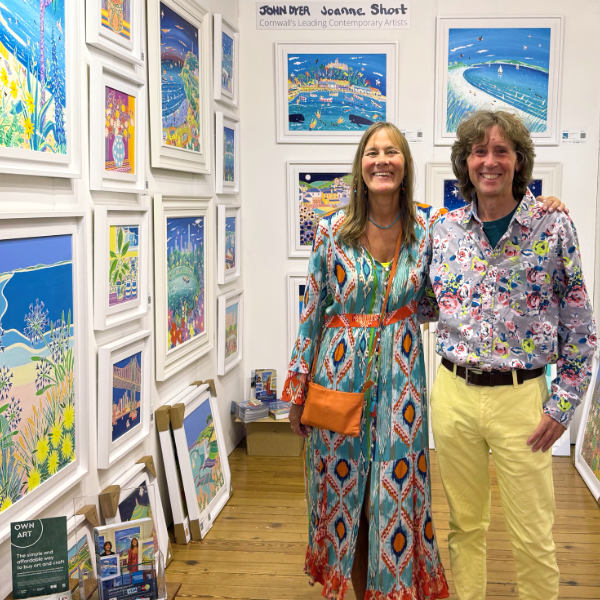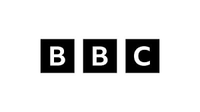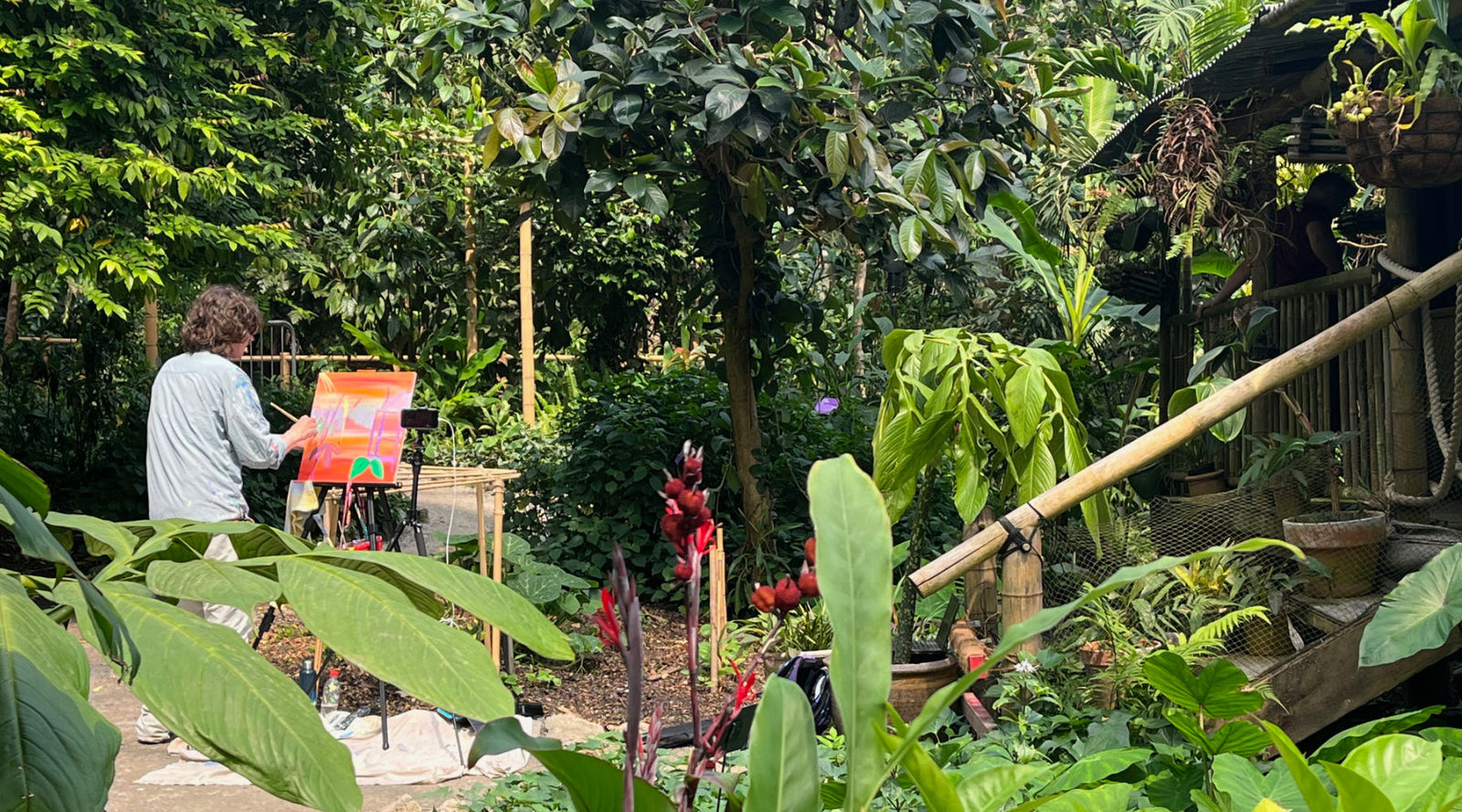
Above: John Dyer at work during the live broadcast to schools
John Dyer recently had the fantastic opportunity to teach over 4000 children about rainforests and painting from the Eden Project's rainforest itself! He did this by using Switcher Studio and Zoom to broadcast a live lesson from the rainforest. The children were from schools all around the world. John's art lesson was designed to teach kids about rainforests and why they are important for our planet.
Above: A replay of the 'Last Chance to Paint' rainforest broadcast from the Eden Project showing John Dyer creating his rainforest painting
Inspiring children with art
On May 5th 2022 artist John Dyer, the artist in residence for the Eden Project, joined Sam Kendall from the Eden Project's education team and Catherine Cutler, who is the Eden Project's Biomes manager, for the first-ever free live broadcast from the largest captive rainforest in the world.

Above: Some of the team who made the event happen. From the left - Tom Trinkle who did the gimbal camera work, Sam Kendall who interviewed, artist John Dyer and Catherine Cutler who provided expert plant facts and knowledge
Why is the Malaysian rainforest landscape important?
The Malaysian rainforest in Borneo is one of the most biodiverse landscapes on Earth. Home to an incredible array of plant and animal life, the rainforest plays a vital role in the global ecosystem. The dense network of trees and vines helps to regulate the flow of water and carbon dioxide, and the rich soils provide a home for countless species of fungi, bacteria, and other microorganisms. The rainforest also helps to stabilize the Earth's climate, absorbing large amounts of carbon dioxide and releasing huge amounts of oxygen into the atmosphere. In addition, the rainforest is an important source of medicinal plants, many of which have yet to be discovered by modern science. With so much to offer, it is clear that the Malaysian rainforest landscape is essential to the health of our planet.
Why is the Eden Project relevant?
The Eden Project has a rainforest biome and is located in Cornwall, England. The rainforest biome contains plants from all around the world, including many rare and endangered species. The Eden Project's rainforest biome is important for several reasons. First, it helps to educate visitors about the importance of rainforests and the threats they face. Second, the biome provides a valuable habitat for plant life. Third, the Eden Project is involved in important conservation and educational work, such as working to re-establish threatened rainforest ecosystems in their native countries. As a result, the Eden Project's rainforest is a vital part of global efforts to protect these vital ecosystems and the perfect place to teach and paint from.

Above: John Dyer painting at The Eden Project during the broadcast
Rainforest Jungle Art
Rainforests are one of the most biodiverse ecosystems on the planet, and they play an essential role in the global ecosystem. Unfortunately, rainforests are also one of the most threatened ecosystems, as they are being cleared at an alarming rate for agriculture and other development. As a result, it is more important than ever to raise awareness about the importance of rainforests. One way to do this is through art. By creating art that celebrates the beauty of rainforests, we can help to raise public awareness about their value and importance. In addition, Rainforest Art can also be used to educate people about the threatened status of rainforests and the need to protect them. When used in this way, art can be a powerful tool for conservation.
John Dyer rainforest paintings
John Dyer is a British artist who is best known for his paintings of rainforests. Dyer first became interested in rainforests when he visited the Amazon rainforest in Brazil in 1989. He was struck by the beauty of the rainforest and its immense biodiversity. He has since made several trips to rainforests around the world, and his paintings reflect his deep love and appreciation for these ecosystems. Dyer's rainforest paintings are characterized by their vivid colours and intricate details. He often includes a variety of animals, spiritual themes and plants in his paintings, highlighting the amazing diversity of life that can be found in rainforests. His paintings are not only visually stunning, but they also convey an important message about the need to protect these threatened ecosystems.
Why did John Dyer broadcast from the Rainforest at the Eden Project?
"In 2018 I founded Last Chance to Paint (Inspired by Last Chance to See - the book by Douglas Adams) which is an educational project that connects children to the natural world using art. It's a simple idea, but a powerful one and I know from experience that the best way to learn and bond to a subject is to spend time with it, looking at it, asking questions and exploring. Art naturally provides the perfect vehicle to do this. Last Chance to Paint has now partnered with the Eden Project, Earth Day and Born Free to provide a world-class and unique inspirational resource for schools all over the world and we have to date carried out two major expeditions to the rainforest using video, artwork, music and daily blogs to allow children to 'travel' with the team, learn and create a rainforest painting. The expeditions were sponsored by Procreate and Innova Art and we hope to attract more world-class sponsors as we emerge from the pandemic and start exploring again.
As the artist in residence at the Eden Project, I knew that by using their amazing rainforest and working with my friends and colleagues from Eden that we could do something really special and inspire thousands of children to discover the rainforest in an exciting live broadcast and a perfect introduction to Last Chance to Paint."
How did we broadcast from Eden's jungle Rainforest?
To reach the audience several key pieces of technology were used and if you are interested in how we achieved it then please read on. There were several criteria that needed to be considered.
Apple iPhones
John Dyer's painting needed to be on display in the broadcast for nearly the entire time as the children would be painting along and in only 45mins every minute was important for them to be able to see the painting as it progressed. So this needed an iPhone on a tripod focused on the canvas.
Eden's rainforest needed to be clearly displayed with a wider view, we used an iPad on a tripod to provide this live feed view for the schools.
Sam Kendall from the Eden Project was allocated the role of anchor and interviewer so another iPhone on a gimbal was set up with a camera operator to follow her and to make sure the schools could see what was being discussed.
Samson Go Mic Mobile®

Above: John Dyer painting and describing what he is doing to the schools using the Samson Go Mic Mobile.
John Dyer and Catherine Cutler needed to be interviewed about the rainforest so a wireless microphone had to be used. Last Chance to Paint is proudly sponsored with equipment by Samson and their Go Mic Mobile® professional wireless system for mobile video was used to provide an interview handheld microphone and a lavalier microphone for John to wear.

Above: Sam Kendall using the Samson Go Mic Mobile handheld wireless microphone to interview Catherine Cutler at the Eden Project
Switcher Studio

Above: The iPad screen showing the Switcher Studio live production area with captions, videos, split screen options and camera feeds
The three live camera feeds and the two-channel sound system all needed to be mixed together live and to have split screens, titles, and pre-roll videos added as the production required. The team used another iPad running the app Switcher Studio. Switcher studio allows multiple wireless camera feeds, pre-designed titles and graphics, split-screen options and the ability to add pre-recorded video into a live feed that can be broadcast to YouTube, FaceBook, other streaming channels and in this case to hand the entire production off to Zoom, which the schools used to access the broadcast.

Above: The three live camera feeds can be seen with the iPad on the tripod, an iPhone on the gimbal and an iPhone on a tripod to the right of John Dyer
How do you link the Switcher Studio app on iPad to Zoom?
First of all, make sure the wireless Samson Go Mic mobile microphones are on and connected to the iPad so it recognises that as the sound input, then:
- On the Mac computer, join or start a Zoom meeting.
- Click Share Screen in Zoom.
- Click iPhone/iPad via Airplay.
- Click the box next to Share soundin the bottom-left corner.
- A checkmark will appear in the box.
- Click Share in the bottom-right corner.
- You will be asked to install a plugin if this is your first time using this method. Click Install.
- On your iPad, open the Switcher Studio app.
- Tap the Outputs tab.
- Tap To HDMI/Airplay.
- Tap Output the Live Feed.
- Once selected, a blue checkmark will appear.
- Open the Control Center on the main switching device.
- Swipe down from the top-right corner of your screen for newer devices.
- Swipe down from the bottom of the screen for older devices.
- Tap Screen Mirroring.
- Tap "Zoom-YOUR MAC COMPUTER'S NAME".
- The video and sound will now be sent from the Switcher Studio software to the Zoom meeting.

Above: This is what the schools received in their classrooms - a professionally produced live 'TV' production from Switcher Studio delivered via Zoom.
John Dyer's jungle painting

'Borneo Rainforest Sunset', 18x18 inches acrylic on canvas by John Dyer.
"I decided with the Eden Team to paint from the Malaysian Home Garden as it provided an amazing jungle and rainforest subject with a traditional rainforest dwelling that is similar to some of the homes the Penan people now live in. This area of the biome has a range of tropical plants to paint, a view through the biome and plenty of space for me to set up my canvas and easel. We utilised the Malaysian hut as a makeshift TV production room as it has power and great wifi connectivity.
I wanted to tell the story of the bat exodus and to get the thousands of children watching painting a sunset over the jungle with the bats streaming out of their cave across the sky. I witnessed this in 2019 in Borneo.
Demonstrating how I start and make a painting live to the children is a challenge, but if they dive in and follow with confidence they end up with a painting that is probably one of the best paintings they have ever done in their lives and the experience helps them remember how important the rainforest is when they proudly show their families and friends their finished paintings.
I started the painting with rich pinks and oranges blended together on the canvas to create the evening sky of the jungle and then started to work on the energetic shapes of the bananas and palm trees. I literally grow my own jungle using paint and then add the bats, animals, banded snakes, hornbills and the Penan people as it progresses."
Jungle artists
"Surprisingly there are not that many artists who are well-known for painting the jungle. I happen to be one of them now and my friend and Amazon Indian artist Nixiwaka Yawanawá is another.
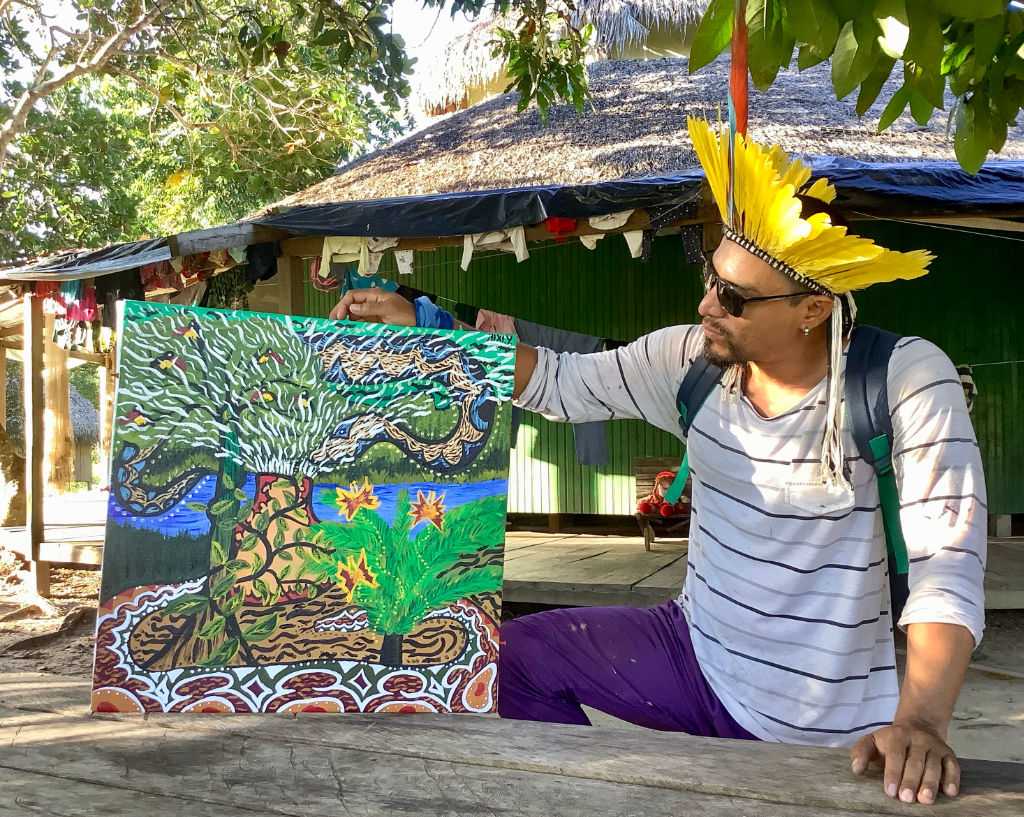
Above: Nixiwaka Yawanawá with his rainforest painting in the Amazon rainforest.
We have both painted in rainforests and discovered incredible visual connections, spirits, patterns, birds, plants and animals that inspire us. Painting in the amazon rainforest with Nixiwaka was amazing.
Above: John Dyer holding his painting 'The Healing Shaman' in the Amazon rainforest of Brazil
If you look at history you will find the self-taught artist Henri Rousseau who is famous for his jungle paintings and is seen as the benchmark for artists who have painted the jungle.
Artist Henri Rousseau's famous paintings depict a lush jungle teeming with life, which has made him one of the best-known painters to come from France. Despite these paintings, this painter of exotic locales never left his country of birth. His paintings, on the other hand, were the product of a city dweller's view of nature. They were moulded by visits to botanical gardens, zoos, and colonial exhibitions as well as pictures of foreign countries seen in books and periodicals. These pictures of seductive and terrifying faraway jungle places countered his paintings of a peaceful and familiar Paris, and they possibly represented the anxieties and desires of modern life."
Above: 'Tropical Forest with Monkeys' by Henri Rousseau. Courtesy National Gallery of Art, Washington. Available as an Open Edition Fine art Print
What was the result of broadcasting live from the rainforest?
During the 45-minute live broadcast, four existing videos were live mixed into the presentation by the producer. In one video Martha-Lilly Dyer explains the bat exodus as millions of bats leave the cave at sunset in the rainforest of Borneo at Mulu, another was all about the Borneo rainforest Penan tribe presented by Robin Hanbury-Tenison, a short video of drone footage showing the devastation of palm oil plantations provided by the Orangutan Foundation was screened whilst John explained the issues of palm oil and a video introducing the Eden Project itself helped to set the scene. This ability to have collections of video assets at hand to play out on-demand was key to the presentation.

Above: An example of a display in a school featuring the children's art that was created during the live Eden Project paint along with John Dyer. You can see more examples of the art inspired by John Dyer's webinars on the Last Chance to Paint webinar page.
The schools reported that they loved the event with many teachers taking the time to add photographs of the children's completed paintings and jungle artwork to their social media.
"We are loving the live art lesson from the@EdenProject with artist@johndyergallery #lastchancetopaint#johndyer#rainforest"
John Dyer's final painting is now exhibited on The John Dyer Gallery and is available for purchase. An art print of the painting is also available. You can also view the other jungle paintings and art prints by John Dyer from Borneo and the Amazon rainforest.
We hope you have enjoyed this blog and if you are a school please do get involved with Last Chance to Paint as there are amazing free resources ready for you to use. Happy painting!
